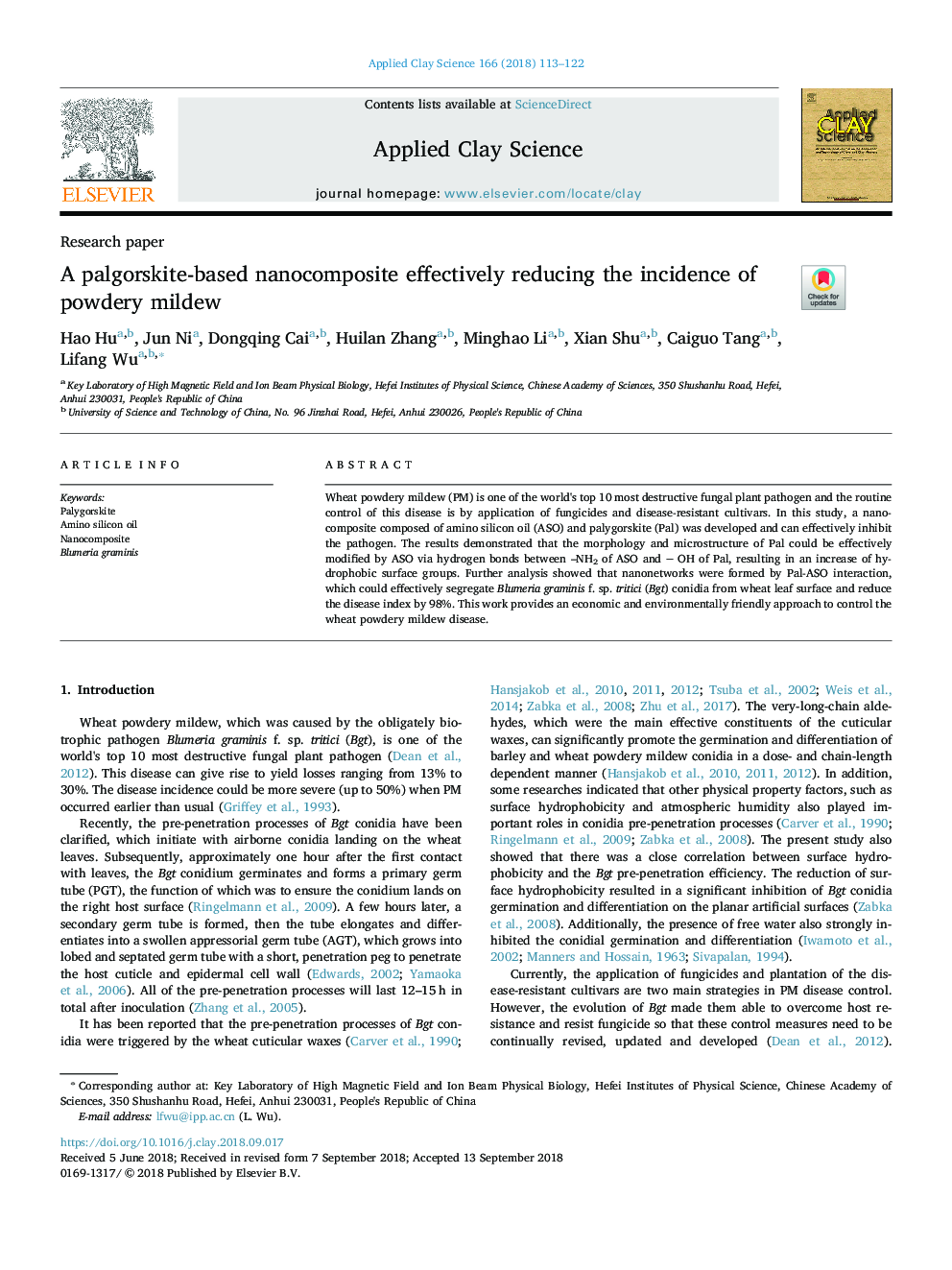| Article ID | Journal | Published Year | Pages | File Type |
|---|---|---|---|---|
| 10156142 | Applied Clay Science | 2018 | 10 Pages |
Abstract
Wheat powdery mildew (PM) is one of the world's top 10 most destructive fungal plant pathogen and the routine control of this disease is by application of fungicides and disease-resistant cultivars. In this study, a nanocomposite composed of amino silicon oil (ASO) and palygorskite (Pal) was developed and can effectively inhibit the pathogen. The results demonstrated that the morphology and microstructure of Pal could be effectively modified by ASO via hydrogen bonds between -NH2 of ASO andâ¯ââ¯OH of Pal, resulting in an increase of hydrophobic surface groups. Further analysis showed that nanonetworks were formed by Pal-ASO interaction, which could effectively segregate Blumeria graminis f. sp. tritici (Bgt) conidia from wheat leaf surface and reduce the disease index by 98%. This work provides an economic and environmentally friendly approach to control the wheat powdery mildew disease.
Related Topics
Physical Sciences and Engineering
Earth and Planetary Sciences
Geochemistry and Petrology
Authors
Hao Hu, Jun Ni, Dongqing Cai, Huilan Zhang, Minghao Li, Xian Shu, Caiguo Tang, Lifang Wu,
